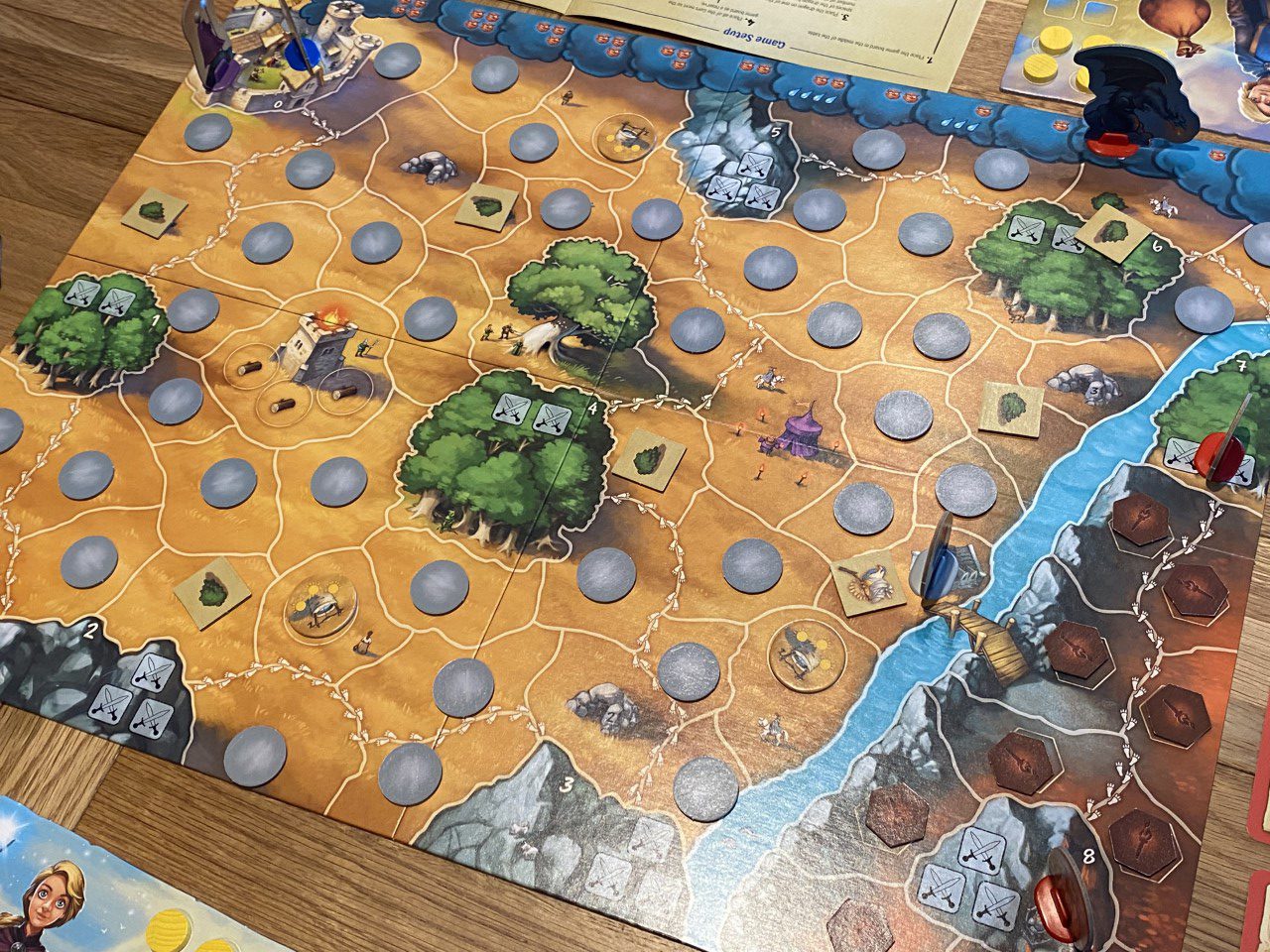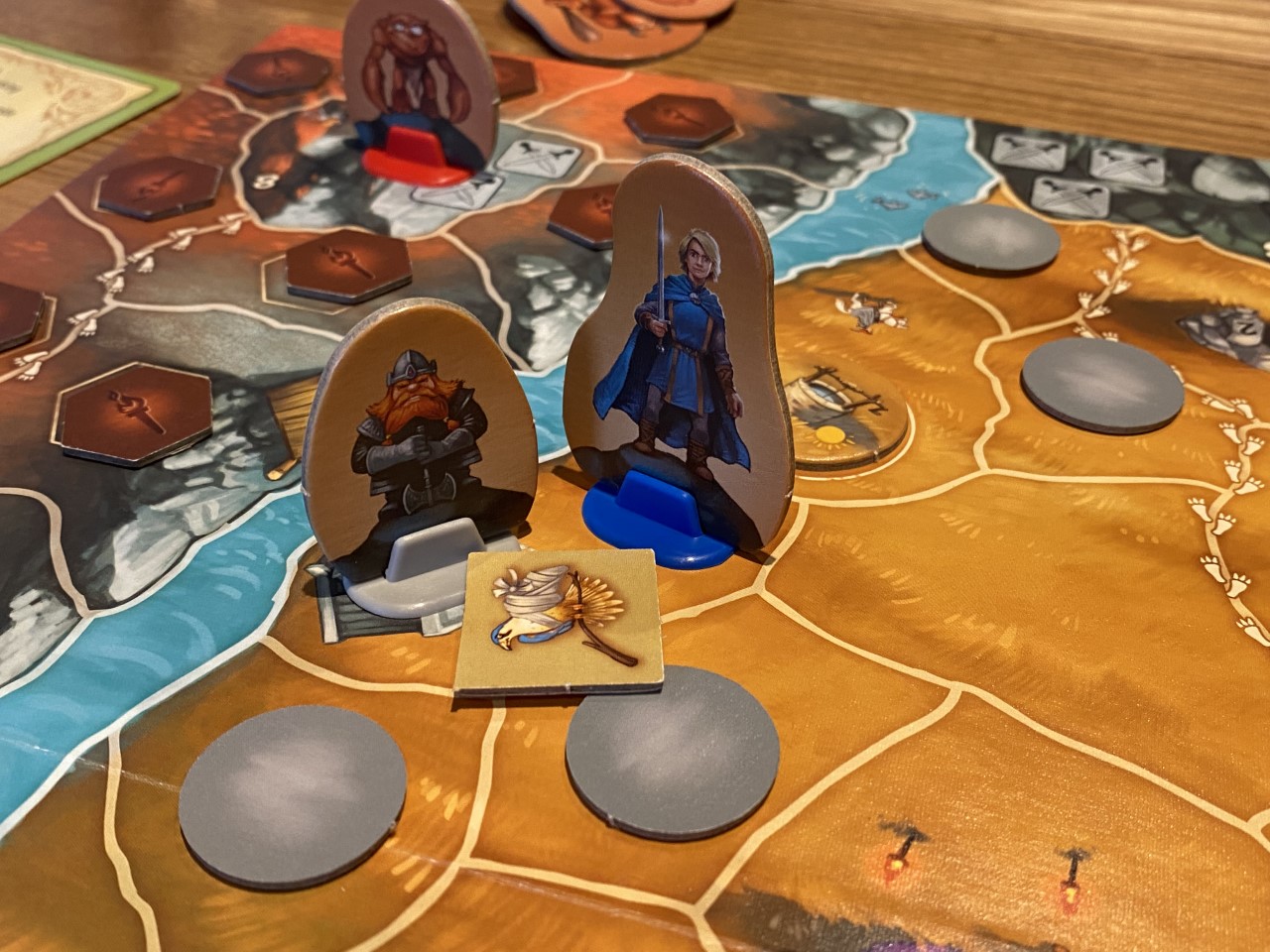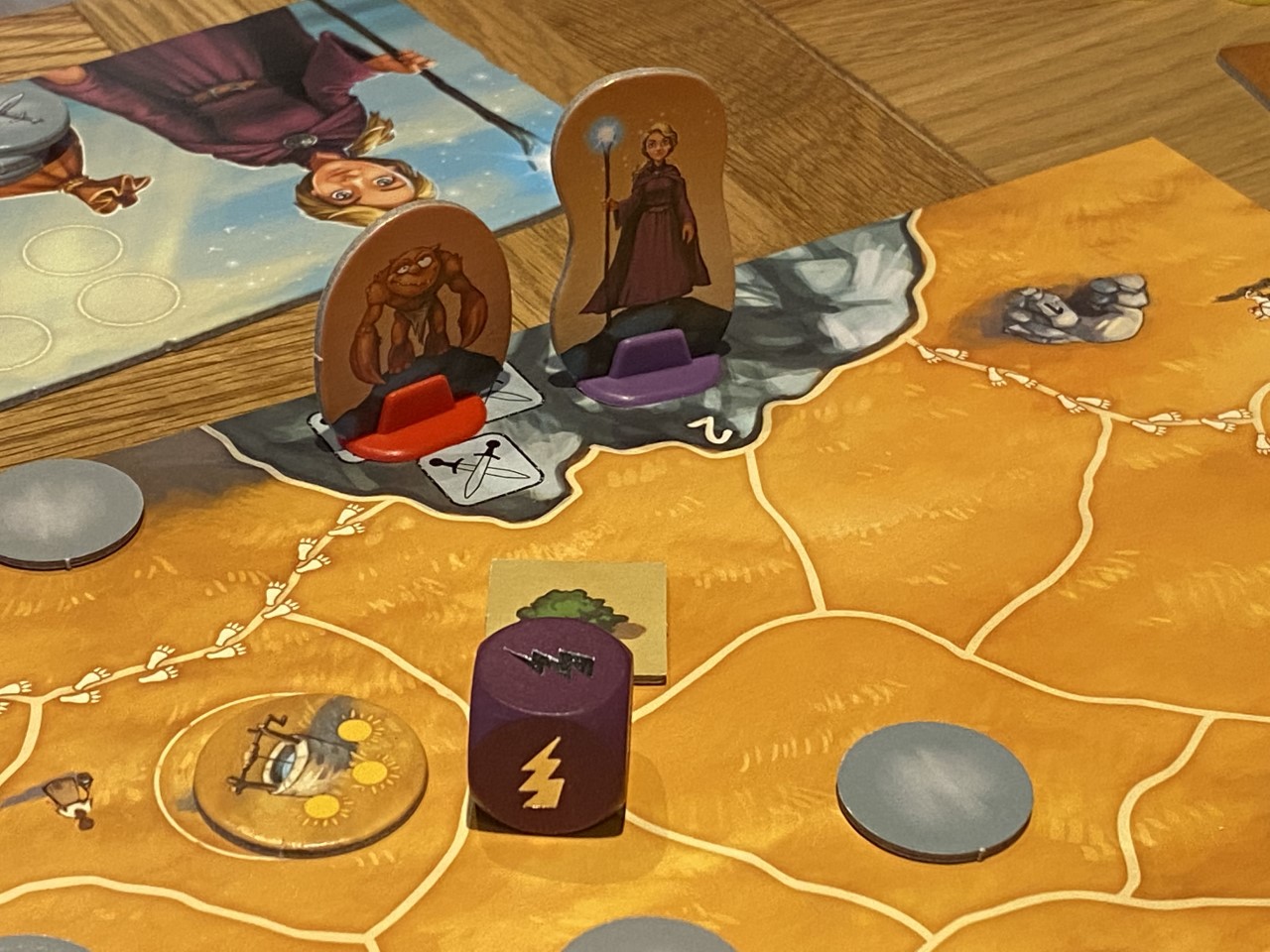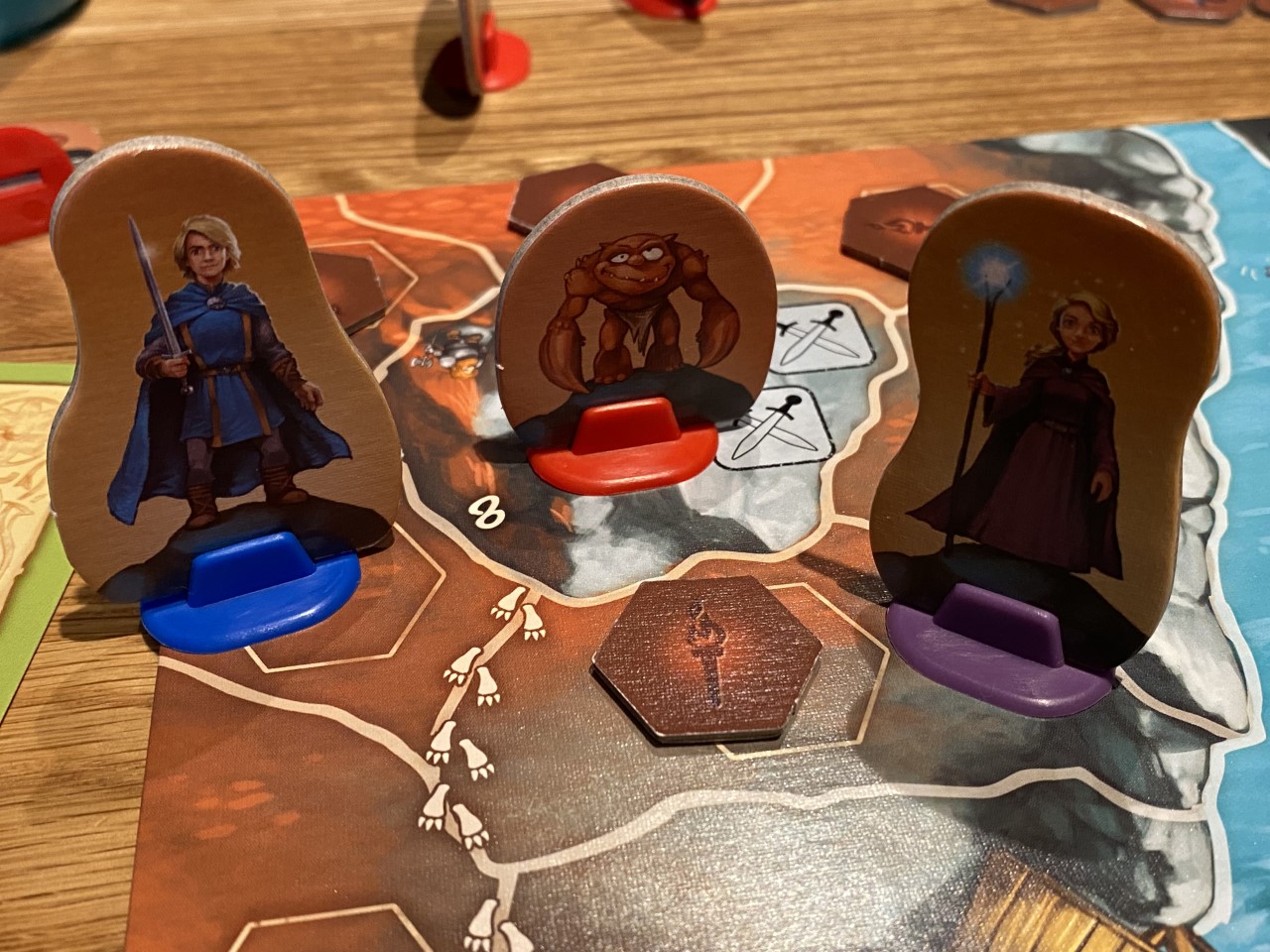Andor: The Family Fantasy Game is a lightweight adventure from a heavyweight duo
If you look at the back catalogue of Inka and Markus Brand, the couple behind games as diverse and award-winning as Rajas of the Ganges, Village and several games in the Exit series, then you’d be forgiven for wondering how on Earth they became involved in Andor: The Family Fantasy Game. This family-weight game is expertly designed to introduce children to adventure games — and goodness me, does it do a fantastic job!
With a recommended age rating of seven upwards (and my own children as proof that younger players can cope, with help) Andor: The Family Fantasy Game presents a cooperative adventure that plays in about an hour. Each game has the same “main” objective (to rescue three wolf pups from an abandoned mine), but the players are also free to choose two out of eight additional side missions.

For younger players, this keeps the adventure fresh each time the game is played. What will we do this time? Will we bring an injured falcon back to the town for healing, or will we seek out the vicious troll and attempt to defeat him? For added difficulty and longevity, players (especially if assisted by an adult) can add one or two extra missions.
Even though it is aimed at younger players, Andor: The Family Fantasy Game has a lot going on. First of all, there’s the selection of characters. The players can choose from the male or female presenting avatars for four different classes. The Elf (who can take a lot of actions), the Warrior (who rolls the most dice in combat), the Dwarf (who can use tunnels to move extra distance) and the Wizard (who rolls just one dice, but has a 50% chance of killing an enemy in one hit).

The first thing I need to mention here is that the choice of characters is… disappointing. Whilst there is a clearly male and female side to each character (which is a start), all eight of the personalities presented are very clearly white and cisgender. When I say white, I mean; really white. Almost all are blonde, and there’s not even a hint of a tan. For a game published in 2020 that intends to be as inclusive as it can be mechanically, I find this unacceptable.
With characters and missions chosen, the board will be set up. The dragon (who just happens to get closer to your town with each turn) will be placed depending on the player count, and then tokens will be randomised and placed on every empty space of the main board and then in the abandoned mine that sits beyond the river. On the one bridge that spans this river, a guard will stand waiting for the side missions you’ve chosen to be completed – when he leaves, the players can cross into the mines.

In addition to the dragon — who will defeat the heroes if it can reach their town — the players must deal with an endless procession of Gors. These comical looking creatures move through eight numbered spaces until they also reach the town, at which point they will summon the dragon, bringing doom ever closer. Heroes must defeat the Gors in order to prevent this, but doing so takes up valuable sunlight.
On that note, and continuing with the idea that there’s a lot for kids to take in when playing Andor: The Family Fantasy Game, let me talk about sunlight. Each character has an amount of sunlight (usually) six to spend. Each turn (whether you move or not) basically costs one, and when you’ve spent all you have, you must rest. The Elf is the only character with more than six sunlight to begin with, but any character can replenish three sunlight by visiting one of three wells placed on the board.

This combination of things to think about — the Dragon, the Gors, the side quests you must fulfill and the pups hiding in the mine, weighted against dwindling actions, is a hell of a thing for kids. We’re talking almost Pandemic level thinking needed for most turns if you want to win, and the party can ill-afford too many missteps. Even so, the theming and visual aspects of the game continue to keep children focussed, and with an adult guiding them, kids can be surprisingly cunning and resourceful.
There is one area in which Andor: The Family Fantasy Game falls down a little during the late game. Once the bridge is crossed and players are in the mine, the game advises us that our heroes can no longer see. Now, whenever we want to flip a token (and of about ten or twelve here, three are the missing pups) we need a torch — found either by rolling dice, or by discarding a torch item from our backpacks.

Here’s the issue — there are only three torch tokens in the game, which can be purchased by finding gold coins out on the map. In any one play, you’re unlikely to find coins to buy all three (and have the time to visit the store or witch that sells torches.) That means on every turn in the abandoned mine, you’ll be rolling your dice to try and get a torch — something that can result in wasting turn after turn, and frustrating your young adventurers.
Aside from the lack of diversity among the characters, this is Andor: The Family Fantasy Game’s only downside. I’m not quite sure where such an experienced design duo were going with this idea, and considering how everything else in the game – right down to how finely balanced the Gor and Dragon combination is — it feels like a clumsy way to end each game.

There have been a few occasions when we’ve played and this end game has played out perfectly, with the pups being rescued whilst the Dragon is just one or two spaces away from our town. On other occasions though, we’ve arrived at the mine and found the pups too quickly, without any real sense of planning or, as a consequence, jeopardy. Other times, we turned up early with good prep, and the luck of the dice meant that we lost — because once you’re in the mine, you’ll rarely bother to take fight actions against the two Gor spaces there, and the Dragon moves each turn anyway based on a dice roll.
In summary, Andor: The Family Fantasy Game is a game that has just the right mix of randomness and strategy right up until the closing act where it goes slightly off the rails. It has a theme that kids love and a set of missions that, whilst often mechanically similar, create enough narrative variety to keep the players happy and engaged. In short, it’s going on my keep shelf, but it won’t stay there once the kids reach a certain age. For 6-10 year olds, I’d say Andor: The Family Fantasy Game is well worth a look.
You can find Andor on Amazon.
Love board games? Check out our list of the top board games we’ve reviewed.
Comments are closed.